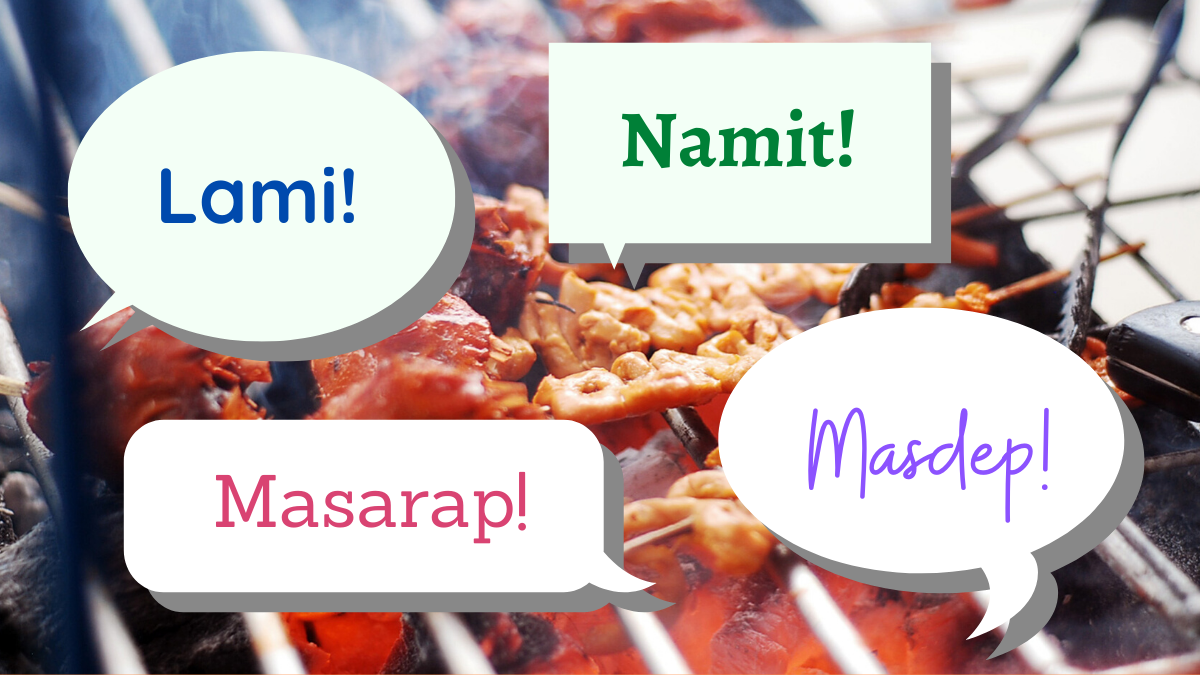16 Reasons Why You Should Love Philippine Languages According to a Linguist
By Bianca Victoria Fulgencio and Nell Gabrielle Roa
 |
| PHOTO: Click The City |
Language is known to be a powerful weapon. With it, we are able to turn our thoughts into words and use them to conquer the world before us, which is why we should never stop cherishing and learning more about language — especially our own.
Here are the 16 reasons why Philippine languages (not Filipino languages) are amazing according to linguist Mhawi Rosero:
1. The Philippine languages have different numbers of vowels.
Although we are taught that we have the five vowels A, E, I, O, and U in Filipino, some Philippine languages originally only had three, which were A, I, and U. Others had 4, which included ‘schwa’, and others even had six, seven, and eight vowels.
2. Stress matters.
As much as we try to avoid stress the best we can in life, stress in language is actually very meaningful. The stress, usually called accent, can change the entire definition of a word. “Kaibigan” can mean both a friend or a lover, depending on where the stress falls.
3. A glottal stop is more than a punctuation mark.
The glottal stop in a word should be considered as significant as a consonant. Without it, the meaning of a word is changed. ‘Nag-isa’ can change from meaning “to be alone” into “to saute” real quick when it’s turned into ‘Nagisa.’
4. You can do a lot with sounds.
Sounds can both be lengthened and assimilated. The Ilocano word “ubing,” meaning ‘children’ may be lengthened into “ubbing” while the phrase “Bahala kayo dyan” can be shortened into just one word, “Balakayodyan.”
5. Sounds can change.
Both sounds and their order can change when words are joined. When we dissect the word “kanluran,” we can observe that it is a product of ka- + lunod + an, and the ‘d’ sound is actually changed into ‘r’, and the placement of the ‘n’ sound is rearranged.
6. Pronouns can be clingy.
In some cases, pronouns attach themselves to the first full word in a sentence. A prominent example of pronouns being clitic particles can be observed in the Ilocano phrase “Dili ako magtell.”
7. Words are very flexible.
Many root words can be used as a noun, an adjective, or even a verb. A word’s purpose in a sentence can only be determined by an affix or how it’s used in a sentence. The word “ganda” can be used in three ways: 1. as a noun, “Di mapantayan ang ganda mo.”; 2. as an adjective, “Maganda talaga ang batang iyan.”; and 3. as a verb, “Gumaganda ka araw araw.”
8. The passive voice is more deliberate.
Compared to the active voice, the passive voice has more action and more of an endpoint. This can be observed by looking at these two sentences: “Sumikat ang araw.” vs “Sinikatan ng araw ang lugar.”
9. Different time frames, same verb form.
The form of a verb does not change despite a change in time frame when describing an action. The sentence “Kumakain ako ng mansanas ngayon” uses the same verb form as “Kumakain ako ng mansanas kahapon nang dumating ka” despite the two events being set in different time frames.
10. Sentences can start with a predicate or an argument.
Albeit usually starting with a predicate, sentences may also begin with arguments or nouns in some circumstances; i.e. “Ijang gitawag ang bata.”
11. Akala mo lang wala, pero meron.
The word “wala” is known to mean “to not have.” However, in some Philippine languages, “wala” actually means “to have”, such as in Ilocano, wadá, and Kapampangan, wáda.
12. Languages are capable of change.
Philippine languages have evolved and continue to evolve, which is proven by the fact that “madumi” and “marumi” are both correct.
13. There are endless ways to express your love.
Considering that there are more than 180 Philippine languages, you can choose from so many ways to say I love you, like “Mahal kita” or “Palangga ko ikaw.”
14. Words don’t always mean the same thing.
Because of our many languages, words are not always uniform in meaning. While “langgam” means ant in Tagalog, it means “bird” in Cebuano. “Libog” may mean confused in Cebuano, but it actually translates to “lust” in Tagalog.
15. The meaning of the word is altered through reduplication.
The reduplication of words, which is quite apparent with nicknames typically drawn from the name, most of the time in our discussion, adds to the uniqueness of the Philippine language. "Tawo-tawo," for example, may indicate "toy person" if not repeated. It takes on a new meaning when it isn't repeated: the Hiligaynon word 'tawo' signifies tao or person.
16. Language is power.
When learners are given the opportunity to have the language of their home used in teaching and learning, they are able to understand better. By using the language they are most comfortable with, they are encouraged to express themselves more freely.
Source: Mhawi Rosero's Facebook Page
